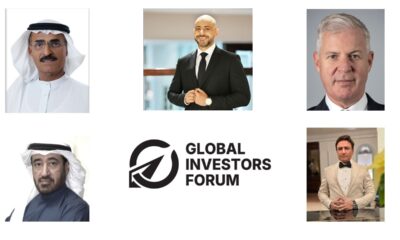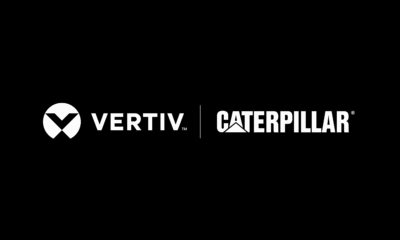Tech Features
The Science Behind Perfect Sound: What Makes an Audio Experience Truly Audiophile-Grade

By: Johann Evanno, Global Category Director – Audiophile Headphones
The experience of music extends beyond mere auditory perception; it involves a complex interplay of emotions, memories, and sensory engagement. For audiophiles—those who seek the purest form of this experience—the goal is to achieve a sound that not only faithfully reproduces the original recording but also transcends the medium to create a visceral, immersive connection to the music. But what constitutes an audiophile-grade sound experience? The answer lies in a combination of technical precision, artistic integrity, and the unique interpretation that occurs within the listener’s mind.
The Journey of the Sound of Music
An audiophile-grade sound experience is not solely defined by the quality of headphones or speakers; it begins much earlier in the musical process. This journey can be broken down into several critical stages:
1. Creation and Arrangement: The foundation of any musical piece starts with the composer’s intent. The clarity and complexity of the composition, from the melody to the arrangement of instruments, set the tone for the entire sound journey. Without a strong compositional base, even the highest-quality reproduction equipment cannot deliver a truly compelling auditory experience.
2. Performance: The performer’s execution brings the composition to life. The dynamics, emotion, and precision of the performance are captured in the recording, adding depth and nuance that are essential for an audiophile-grade experience. For example, microdynamics—subtle variations in volume—are critical for conveying the expressiveness of a performance and can only be faithfully reproduced by equipment capable of handling the smallest nuances in sound.
3. Recording, Mixing, and Mastering: This stage involves capturing the performance as accurately as possible. High-resolution recording formats (such as DSD or PCM) and meticulous mixing and mastering processes preserve the fine details that make music compelling. Studies have shown that listeners can discern differences in sound quality at sample rates of 96 kHz or higher, underscoring the importance of high-resolution recording formats (Griesinger, D., “Perception of Mid-Frequency Loudness,” 2008).
4. Transmission and Reproduction: High-quality transmission and reproduction require equipment that can handle the full range of frequencies and dynamics present in a recording. Specifications such as frequency response, signal-to-noise ratio, and total harmonic distortion become critical at this stage, as they determine how accurately the equipment can reproduce the sound as intended by the artist and sound engineer.
5. Listening and Perception: Finally, the sound reaches the listener. However, the experience is not purely objective; it is shaped by the listener’s unique auditory perception, environmental factors, and even mood. No two listeners hear music the same way, as personal auditory profiles and cognitive biases come into play.
The Technicalities Behind Audiophile-grade Sound
To achieve an audiophile-grade experience, certain technical specifications are non-negotiable. These parameters ensure that the equipment is capable of reproducing sound with the utmost accuracy:
1. Frequency Response: Frequency response refers to the range of frequencies that an audio device can reproduce, typically measured in Hertz (Hz). An audiophile-grade system must cover the full audible spectrum, generally accepted as 20 Hz to 20 kHz, with a flat response curve to avoid coloration of the sound. However, some high-end equipment extends beyond this range, such as the Sennheiser HD800S, which reaches up to 51 kHz, and the Sennheiser HE1, the brand’s flagship model, renowned for its exceptional clarity and precision in sound reproduction, offering a more detailed reproduction of overtones and harmonics that contribute to sound clarity and realism.
2. Signal-to-Noise Ratio (SNR): The signal-to-noise ratio measures the level of the desired audio signal relative to the background noise. A high SNR, typically above 90 dB for audiophile equipment, ensures that even the faintest sounds in a recording can be heard clearly without interference from electronic noise.
3. Total Harmonic Distortion (THD): THD measures the distortion introduced by the audio equipment itself. Lower THD means the equipment can reproduce the original recording with minimal alteration. For audiophiles, even small amounts of distortion (below 0.1%) are unacceptable, as they can muddy the sound and reduce clarity.
Beyond Specifications: The Qualitative Dimensions of Sound
While technical specifications are critical, they do not fully encompass what makes an audio experience truly audiophile-grade. Certain qualitative aspects play a pivotal role:
1. Soundstage and Imaging: Soundstage refers to the perceived spatial location of sound sources in an audio recording, while imaging denotes the precision of these locations. A well-produced soundstage creates a three-dimensional space in which each instrument and vocal can be distinctly positioned, enhancing the realism of the listening experience. High-quality equipment is capable of rendering a wide, deep, and precise soundstage, making the listener feel as if they are in the midst of the performance.
2. Timbre and Tonal Balance: Timbre is the characteristic that allows us to distinguish between different instruments, even when they play the same note. Tonal balance ensures that all frequencies are represented evenly. High-end audio equipment excels at preserving the natural timbre of instruments and voices, which is crucial for an authentic listening experience.
The Human Element: Perception and Environment
Even with the most advanced audio equipment, the ultimate quality of sound depends heavily on the listener’s environment and personal hearing abilities. Room acoustics, ambient noise, and individual hearing profiles significantly influence the perception of sound quality. A small, rectangular room may create standing waves that lead to uneven sound distribution, while a larger, irregularly shaped space may provide more diffuse sound reflections, resulting in a more balanced and natural sound. Moreover, personal factors like age, auditory health, and cognitive biases affect how sound is perceived. For example, age-related hearing loss, or presbycusis, can reduce sensitivity to higher frequencies, altering the way music is experienced.
Advancements in audio technology are continually reshaping what is considered audiophile-grade. Innovations such as spatial audio and immersive sound technologies are pushing the boundaries of what is possible. Spatial audio, which creates a three-dimensional sound field, aims to transport listeners to the heart of the music, making them feel surrounded by instruments and vocals. Immersive sound technologies seek to enhance the listening experience by incorporating visual and tactile elements, creating a multisensory engagement with the music.
The Role of Humility in Craft
Manufacturers like Sennheiser recognize that while their products play a significant role in achieving high-quality sound, they are only one component in a larger chain. Their approach reflects a commitment to continuous improvement and an understanding that perfect sound is a collaborative effort between the artist, the engineer, and the listener. This humility drives them to refine their products constantly, knowing that the pursuit of perfect sound is an ongoing journey rather than a final destination.
An audiophile-grade experience is not merely about the gear or the specifications but about creating a profound connection with the music. It is an experience that transcends sound, one that resonates deeply within the listener, evoking emotions, memories, and a sense of presence. As technology evolves and our understanding of sound deepens, the pursuit of perfect sound continues—a journey marked by passion, precision, and moments of pure auditory bliss.
Tech Features
How sustainable materials and AI are shaping NEOM, Masdar City, and Dubai’s new developments
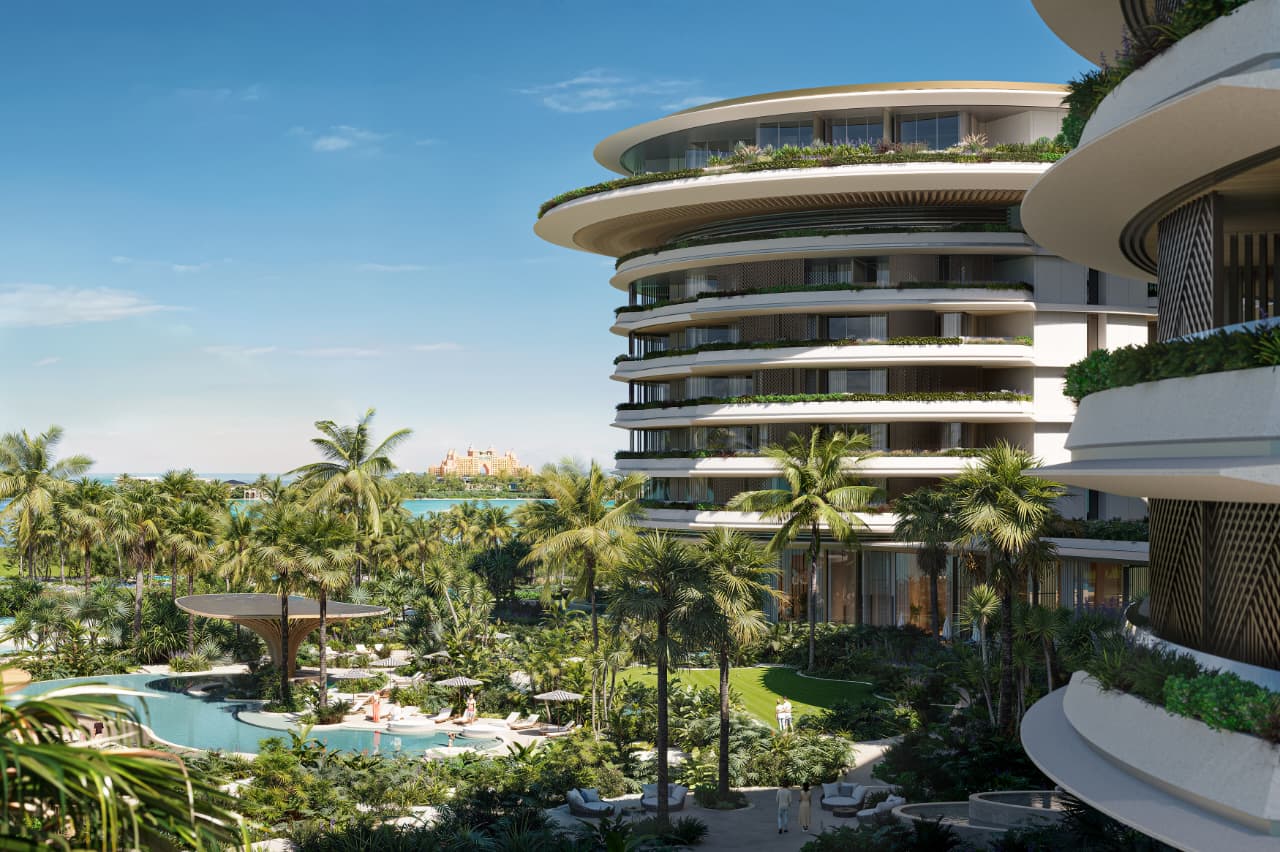
NEOM, Masdar City and Dubai, cities that have long been a symbol of wealth and ambition, are not just building new skylines, they’re attempting to redefine what a city can be. With construction sector being one of the largest contributors to global emission, Middle East, flush with capital, ambitious projects, and new masterplans is testing a simple hypothesis: Can the region radically lower the carbon and resource footprint of entire cities through sustainable materials and Artificial Intelligence (AI)?
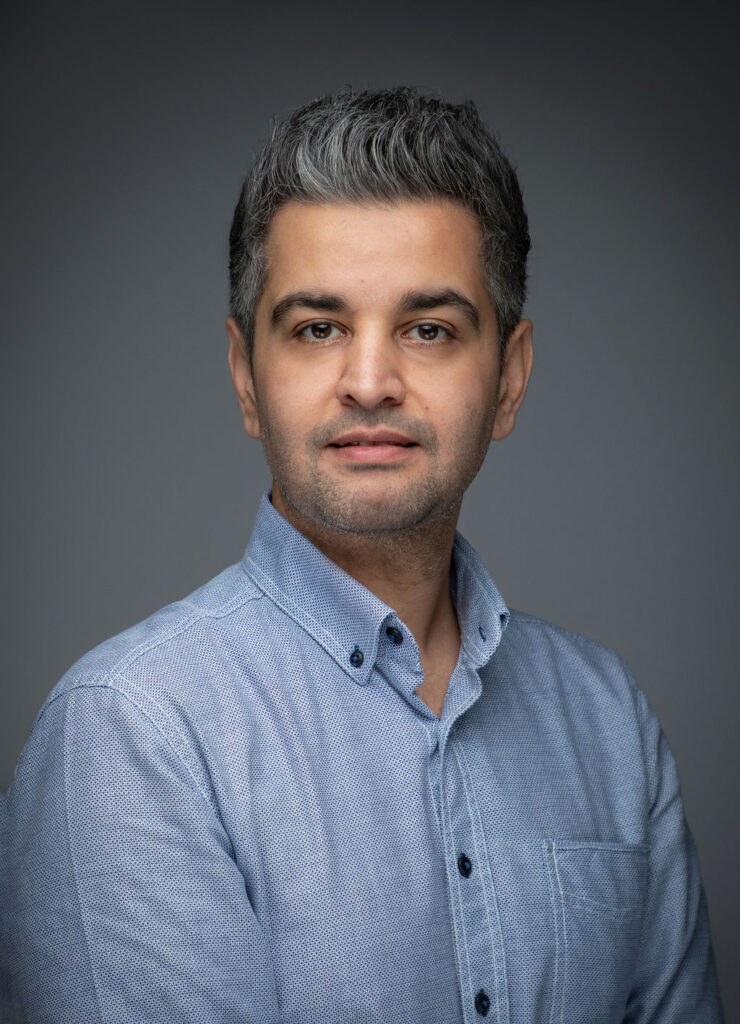
MSc Global Sustainability Engineering
Heriot-Watt University
Governments and developers, in the Gulf, are shifting policies and procurement practices toward low-embodied-carbon alternatives: recycled aggregates, low-carbon concrete, engineered timber, high-performance insulation and off-site modular systems that dramatically cut waste. According to Grand View Research, in 2024, the global green building materials market was estimated to be worth hundreds of billions of dollars, and it is forecast to grow. Moreover, the GCC green building materials market alone reached an estimated USD 10.6 billion in 2024 and, according to an IMARC Group report, is expected to grow significantly as demand for sustainable inputs scales up.
NEOM’s energy and utilities arm, Enowa, explicitly emphasises circular systems and positions the project as a 100%renewables-powered ecosystem that integrates water, energy and industrial systems from the outset. It combines Industry 4.0 technologies with circular economy principles that force the choice of materials toward those that can be reused or easily recycled, while promoting off-site fabrication techniques that shrink construction waste.
For more than a decade, Masdar City has been offering a working prototype of what happens when sustainable material choices meet a systems approach, translating low-carbon urban design into practice. It pairs demonstrable clean energy capacity with district cooling systems, solar generation, and energy-efficient building envelopes with planning that reduces transport demand. Masdar’s broader organisation, its parent group, has also been scaling fast. Its report highlighted growth in clean energy capacity and an organisational push into integrated, low-carbon urban projects. The Masdar model is a reminder that reliable renewable supply makes higher-embodied, energy-intensive solutions (for example, electric construction equipment charged by renewables).
But materials alone won’t be enough, this is where AI becomes a multiplier. AI tools now enable topology optimisation for material efficiency, predict and prevent waste by logistics algorithms (supply chain forecasting, demand matching). In operations, machine learning drives HVAC optimisation (manage buildings in real time, predictive maintenance). For projects on the scale of NEOM or Masdar, with thousands of buildings, millions of square meters and complex infrastructure, AI systems can turn millions of data points into continuous efficiency gains. NEOM and related initiatives are already integrating AI for water, energy and materials planning, while Oxagon’s industrial model assumes broad adoption of automation and AI in production.
Dubai’s trajectory shows how regulation and market amplify these technological shifts and incentives accelerate adoption. Municipal green building regulations, alongside certifications such as LEED and local green building systems, have driven a rapid uptake of sustainable construction practices, pushing developers to pursue energy-efficient envelopes, reduced water use, and green materials. According to Dubai Municipality, the city’s policy environment, paired with developers’ appetite for premium assets that offer lower operating costs and resilience to climate risk, creates an ecosystem where sustainable materials and smart building systems are not only environmentally desirable but financially sensible.
The Grand View Research estimates show the Gulf’s green-building sector and related materials markets expanding rapidly, with market valued in the mid-to-high tens of billions of dollars and forecast to double-digit compound annual growth rates in the coming five years. That inflow of capital matters because sustainable materials often carry higher up-front cost but deliver lower lifecycle costs, while AI and automation substantially reduce construction and lifecycle operating overruns. In other words, together they improve the return profile for long-term investors.
Yet ambition collides with practical constraints. Supply chains for low-embodied materials must scale quickly; while those in the region remain sensitive to cost, logistics, and local standards. Skilled labour in advanced assembly and data-science expertise to drive AI systems are limited and must be cultivated. Governance questions are also pressing: who owns the data generated by smart urban systems, how is privacy protected, and how do we ensure that AI allocates resources such as water, energy and mobility fairly. These are governance design problems, solvable, if tackled deliberately.
There are three pragmatic approaches for solving them. First, governments and project sponsors can accelerate local manufacturing of green materials through incentives and public-private partnerships. Second, procurement rules should favour lifecycle carbon and circularity over the lowest upfront price; that shifts incentives toward durable, reusable materials and off-site fabrication. Third, data-governance frameworks must be established from the outset: transparent rules about ownership and enable third-party innovation without commercial capture.
If NEOM, Masdar City and Dubai’s new districts can scale these approaches, the payoff will be tangible: lower lifecycle emissions, less construction waste, healthier indoor environments, and long-term savings for investors and taxpayers. The Middle East can move beyond being a market for imported technology to becoming a global crucible for sustainable urban practices, provided policymakers, developers and technologists align incentives and share data and best practices.
NEOM, Masdar and Dubai’s new districts are more than national statements; they are testbeds whose lessons could reshape how cities are built globally. If they get it right, prioritising lifecycle outcomes, scaling green materials, and embedding AI from design to operations, Middle East will be measured not only in square metres and skylines, but in the tonnes of embodied carbon avoided and the megabytes of intelligence that keep cities efficient and humane. The world will, for once, be watching not only to admire, but to learn.
Tech Features
Smart Grids: Powering the Middle East’s Renewable Energy Future

Dr. Mutasim Nour, Director of MSc Energy, School of Engineering and Physical Sciences, Heriot- Watt University Dubai
The usage of green energy has soared in the Middle East in recent years, highlighting the region’s futuristic and sustainable approach to socio-economic growth. According to a report by Rystad Energy, by 2050 renewable energy sources, including hydro, solar, and wind are expected to constitute a staggering 70 percent of the region’s power generation mix – a massive jump from the five percent recorded at the end of 2023. The UAE stands out in particular, ranking 10th globally in per capita solar capacity in 2023, with an impressive 708 watts per capita as per the World Future Energy Summit 2025 report. From a modest 12 MW in 2012 to an ambitious 6.1 GW in 2023, the UAE’s solar capacity has grown rapidly. Saudi Arabia is also making significant progress in this domain, with over 17 major renewable projects producing 41.2 million MWh annually that are aimed at fulfilling nearly 66 percent of residential energy needs.
These diversification efforts are accelerators of economic development as well as environmental well-being. However, green energy relies on variables that often fluctuate such as temperature, season, and wind intensity. This makes balancing supply and demand a complicated task requiring innovative solutions. The most promising one has been found in Smart Grids, which are an upgraded version of the traditional power network. These grids use digital technologies to monitor, predict, and respond to energy demand in real time, and enable two-way interactions where consumers can also produce energy (through solar panels, for example) and feed it back into the system. Their components include an Advanced Metering Infrastructure (AMI), grid automation and control, energy storage, and demand response programs that help them deliver superior results.
Smart grids are more flexible, efficient, and reliable compared to traditional grids and have helped significantly strengthen the renewable energy infrastructure in the Middle East. Saudi Arabia, for instance, has been developing AI-powered smart grids to integrate renewable energy and modernise infrastructure as part of its Vision 2030 initiative. It has already automated 32% of its electricity distribution network and installed more than 11 million smart meters to further meet its goal of achieving net-zero emissions by 2060.
The UAE has also emerged as a pioneer in renewable energy innovation. Under the UAE Energy Strategy 2050, the nation aims to triple its renewable energy contributions by 2030 and achieve a 50 percent clean energy mix by 2050, aided by a substantial investment of AED150-200 billion. The Department of Energy in Abu Dhabi also recently announced the first legally binding clean and renewable energy target in the Middle East called the Clean Energy Strategic Target 2035. This regulatory framework dictates that 60 per cent of the emirate’s electricity will be generated from clean and renewable sources by 2035, and there will be up to 75 per cent reduction in carbon emissions per MWh produced by the electricity sector. Energy storage solutions to achieve this goal, due to which the Department of Energy has signed a Memorandum of Understanding with the State Grid Corporation of China to build a strong and highly efficient smart energy and power system.
In Dubai, progress in green energy is being led by the Dubai Electricity and Water Authority (DEWA), which has executed a $1.9 billion smart-grid initiative to deliver high standards of reliability and energy management. The smart grid initiative has helped DEWA achieve some remarkable outcomes: in 2023, line losses in electricity transmission and distribution networks were reduced to 2 percent, compared to 6-7 percent in Europe and the US. Additionally, water network losses dropped to 4.6 percent, significantly lower than approximately 15 percent reported in North America.
Even as smart grids transform the energy landscape, there are challenges that hinder the ability to effectively scale them up. These include:
- Technical interoperability: Smart Grids run on a complex mix of sensors, meters, and communication devices that are often made by different manufacturers. Ensuring that all data between these components is compatible and integrated correctly is often a difficult feat.
- Cybersecurity: The reliance on digital communications and internet-based technologies in Smart Grids bring a new set of challenges with them. There is increased vulnerability to cyber-attacks that can lead to power outages, data breaches, and even structural damage to grid infrastructure.
- Regulatory barriers: Current regulations and policies often need to be adapted for the dynamism of smart grids. A clear and streamlined framework makes adoption easier and attracts investments into this technology.
- Consumer awareness: Consumers can be skeptical of the advantages a smart grid presents, especially due to data privacy concerns and doubts regarding wireless communication. Initiatives like community education and incentivisation can go a long way in increasing consumer acceptance and support.
Smart grids also depend on a high initial investment and regular infrastructure upgrades to function properly. To address these challenges, governments across the world must formulate a comprehensive strategy that outlines the investment, infrastructure, and education required for smart grid networks in their region. A streamlined approach and clear objectives can revolutionise green energy integration and help mitigate climate change. With smart grids, consumers are empowered to become a part of the energy ecosystem and foster a culture of conservation and sustainability.
Tech Features
HR-led Initiatives to nurture women-led TECH startups
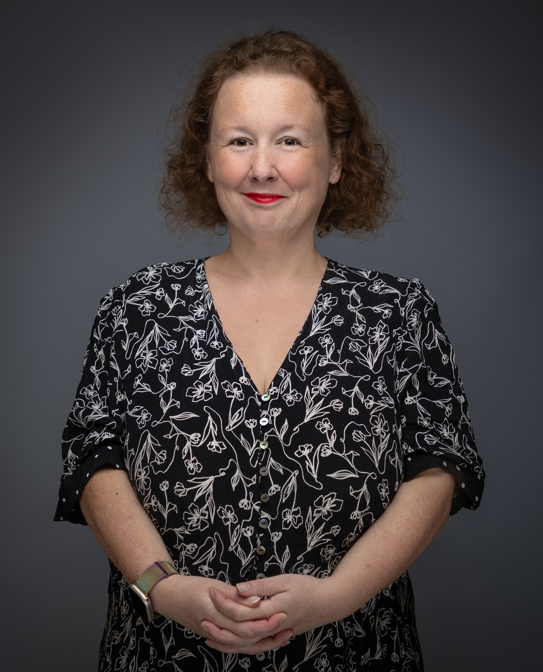
Professor Fiona Robson,
Head of the School of Social Sciences & Edinburgh Business School
HR is no longer just about recruitment and retention – there is a growing trend towards taking a more creative and innovative approach. This can involve looking at talent through different lenses rather than seeing it as a hierarchical talent management process focusing on vertical promotions within the organization.
In an age where HR rightly have a seat at the strategic table for decision making, they have the opportunity to ensure that appropriate levels of funding and expertise are used to develop a forward-looking talent strategy that goes beyond the norm. Artificial intelligence (AI) brings a plethora of opportunities for organisations to be braver in how they identify potential talent. Using AI to identify talent can be a useful starting point but when it comes to areas such as innovation and identifying an entrepreneurial mindset, it may be more difficult to pinpoint the traits which could indicate potential to innovate.
Where HR teams start to consider and plot non-traditional pathways they may be able to recruit and retain employees with diverse skillsets. Taking an entrepreneurial path opens up the talent pool as it isn’t as focused on people looking at the next hierarchical step up within the organisation. This is important as there are usually resource constraints about how many vacancies are available to fill at the highest pay grades in the organisation. These new pathways should provide opportunities for women to shine in different types of projects and recognise the strategic importance of creative thinking and innovation.
Providing testing opportunities
Depending on the level of finance available there are some additional resources that could be provided. Innovation sprints or challenges can be a great way to test out ideas and receive feedback from different groups of stakeholders. They may facilitate prototyping and identify issues that were not previously considered. Internal technology venture labs can also provide a safe environment to test out ideas and proof of concept. Collaborating with Universities who are experienced in running labs and sprints can be very beneficial, they may also have access to funding to support the development of new products and services. However, in order to be truly successful, they need to ensure that there is a sustainable follow up process before the momentum deflates.
Inclusive Procurement and Equitable IP Policies
Organisations can seek to lead the way and exhibit good practice by reviewing their procurement policies where practicable to ensure that they are inclusive. Examples may include having provision for flexible payment terms which would make it easier for those at the beginning of their entrepreneurship journey. Access to specialist support which could help women to set up their businesses in a more timely way could also break down some of the perceived barriers. Often the processes around procurement can be rather cumbersome so the provision of training which shows exactly how to navigate it could be helpful. Forward looking organisations might seek to approve a process whereby women entrepreneurs are given priority with their applications.
For many women, even thinking about intellectual property (IP) and patents can seem overwhelming if they have never had exposure to this world before. The introduction of simplified processes could act as a springboard to attract more women, particularly if the timeline can be expedited so that there is a shorter gap between the initial idea and when it is approved. Having access to real case studies showing how this happens would also be reassuring. In large organisations, the HR team may be able to encourage the legal team to provide some initial advice so that prospective entrepreneurs get a realistic insight into whether their proposal has merit or not.
Commercial Advantage Through Policy
HR can make a name for itself by encouraging innovation through widening participation and breaking down barriers to encourage, support and recognise innovation. For some HR professionals this may be quite a shift for them so they may also require some reskilling and retraining.
It would be good practice for organisations to regularly review their HR policies to ensure that they reflect the changing eco-system and that there are appropriate diversity clauses within the library of policies, procedures and practices. As part of this, ensuring that there is awareness of bias and how this can sneak into processes unconsciously and inadvertently disadvantage women. The establishment of women’s networks would be a proactive approach and could help them at all of the different stages of developing and executing their entrepreneurial ideas.
Providing funding opportunities may be one of the most impactful decisions that an organisation can make. Obviously this would need to have transparent parameters around it but it could be the difference between an idea being turned into practice or not. If the funding allocation is governed by stakeholders with appropriate expertise in different areas i.e. finance, law, governance and people, this would reduce the organisational risk of investing in small new businesses. Where there isn’t a potential conflict of interest, organisations could also make a significant impact by facilitating market entry and opening doors within networks and supply chains.
-

 Tech News1 year ago
Tech News1 year agoDenodo Bolsters Executive Team by Hiring Christophe Culine as its Chief Revenue Officer
-

 VAR7 months ago
VAR7 months agoMicrosoft Launches New Surface Copilot+ PCs for Business
-

 Tech Interviews2 years ago
Tech Interviews2 years agoNavigating the Cybersecurity Landscape in Hybrid Work Environments
-

 Tech News4 months ago
Tech News4 months agoNothing Launches flagship Nothing Phone (3) and Headphone (1) in theme with the Iconic Museum of the Future in Dubai
-

 Tech News2 years ago
Tech News2 years agoBrighton College Abu Dhabi and Brighton College Al Ain Donate 954 IT Devices in Support of ‘Donate Your Own Device’ Campaign
-

 Editorial12 months ago
Editorial12 months agoCelebrating UAE National Day: A Legacy of Leadership and Technological Innovation
-

 VAR1 year ago
VAR1 year agoSamsung Galaxy Z Fold6 vs Google Pixel 9 Pro Fold: Clash Of The Folding Phenoms
-

 Cover Story9 months ago
Cover Story9 months agoUnifonic Leading the Future of AI-Driven Customer Engagement














